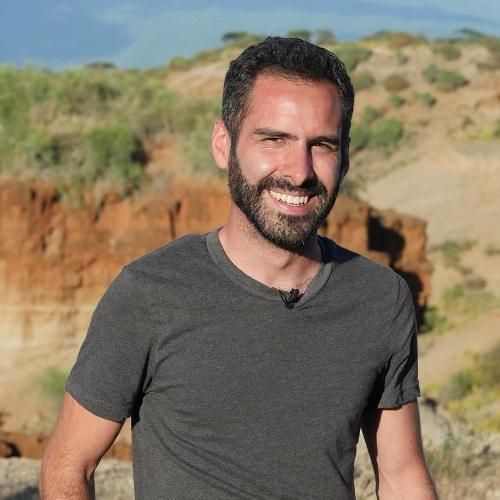
DAVID MANUEL
MARTÍN PEREA
Investigador postdoctoral
Email: davidmam@ucm.es
Doctor por la Universidad Complutense de Madrid con la tesis Tafonomía de los yacimientos paleontológicos de Batallones-3 y Batallones-10 (Vallesiense Superior, Madrid, España) 2021. Dirigida por Dra. María Soledad Domingo Martinez, Dr/a. Jorge Morales Romero.
I am a geologist who works closely with prehistorians at archaeological sites. In this sense, my scientific career has focused on the study of site formation (both archaeological and palaeontological) through the detailed analysis of fossil remains and sedimentary deposits. For this reason, taphonomy and sedimentology have been the central disciplines developed in my research. I began my research activity on the Miocene site of Somosaguas (Madrid, Spain), resulting in a Master’s Thesis and several international publications. During this time, I became involved with several national and international archaeological projects as a geologist, in order to unravel site formation processes and help them tackle geological and geoarchaeological issues and also in the excavations of the Miocene vertebrate sites of Cerro de los Batallones (Madrid, Spain). This last involvement led to receiving an FPI grant from the Spanish Government to work at the Spanish National Natural Science Museum in order to carry out taphonomical analyses and study site formation of the Batallones-3 and Batallones-10 sites. These studies resulted in many JCR publications (four as the first and corresponding author), a book chapter and, ultimately, my PhD Thesis. As part of this FPI grant, I have been working as an assistant professor for the subject “Geología Aplicada a la Biología”, taught in the Biology Degree in the Complutense University of Madrid, for three years (a total of 180 lecture hours). I have also tutored a student from the Geology Degree from the same university, for the subject “Prácticas Profesionales”, where she learned and helped me carry out taphonomical analyses, resulting in her co-authoring the resulting JCR publication. I believe training young researchers and contributing to their career development is vital, and wish to help others in the future as much as others have helped me in the past. Additionally, I have been trying to give back to society in several ways. First, I always try my best to do public science outreach of every publication I am involved in, either in public lectures or using social media. Second, and most importantly, I have been actively participating with “Ciencia Sin Barreras” and “Geodivulgar”, two scientific outreach projects aimed at functionally diverse people who are eager to learn about geology, palaeontology and archaeology. Lately, after defending my PhD, my career has been focused on geoarchaeology, unravelling site formation processes and tackling geological issues, working alongside national and international archaeological projects. I have been lucky enough to carry out research on Pleistocene sites at Olduvai Gorge and Nasera Rockshelter (Tanzania; over ten months of fieldwork), at the Calvero de la Higuera sites (Madrid, Spain; six months of fieldwork) and most recently, in El Castillo Cave (Santander, Spain; three excavation campaigns). These collaborations with other national and international institutions have translated into the formation of an international network of research contacts, which has also led to stays in overseas I+D+I centres; in the National Museum of Tanzania (Dar es Salaam, Tanzania) and in the Universidade Nova de Lisboa (Lisbon, Portugal), where I was able to learn and apply new methods and techniques to my research. Additionally, working alongside these researchers from other institutions has led to collaborations in numerous JCR publications, some of them as first and corresponding author. As for the future, I believe my post-doctoral phase should be not only a period of consolidation of previous knowledge but also one to expand my training and learn other methodologies in order to incorporate them into archaeological sites in which I collaborate. These new lines of study include the use of micromorphology and microstratigraphy.







